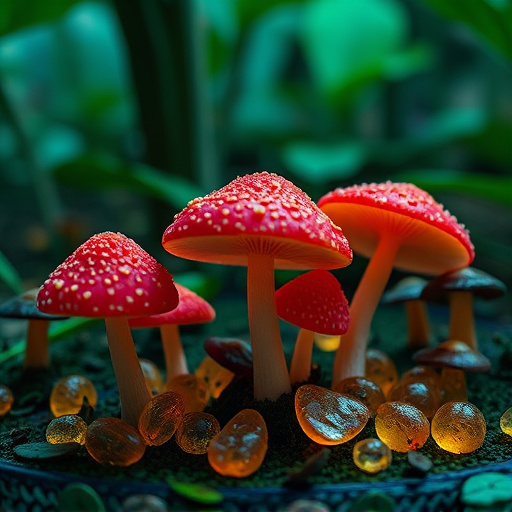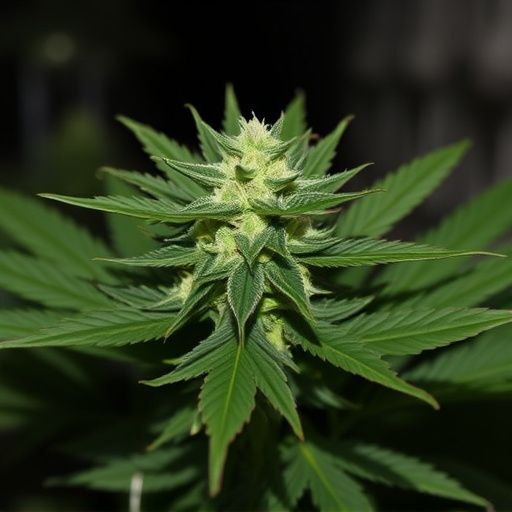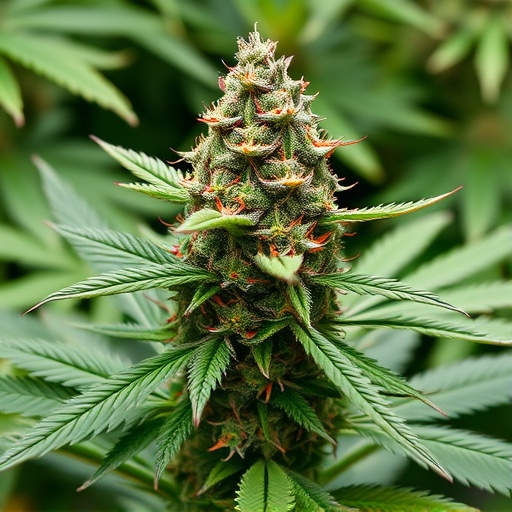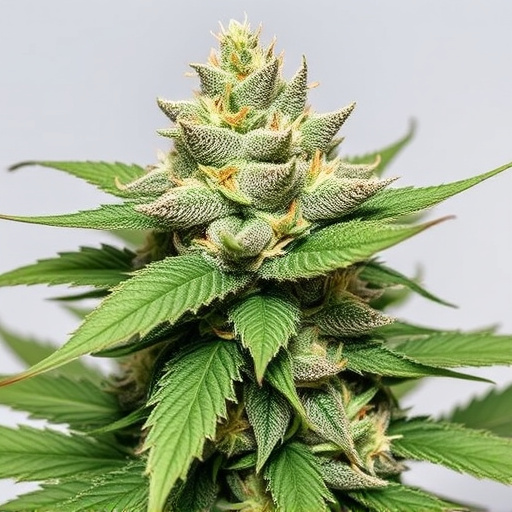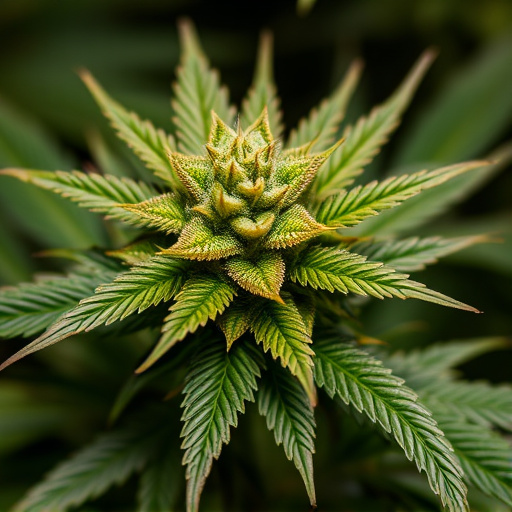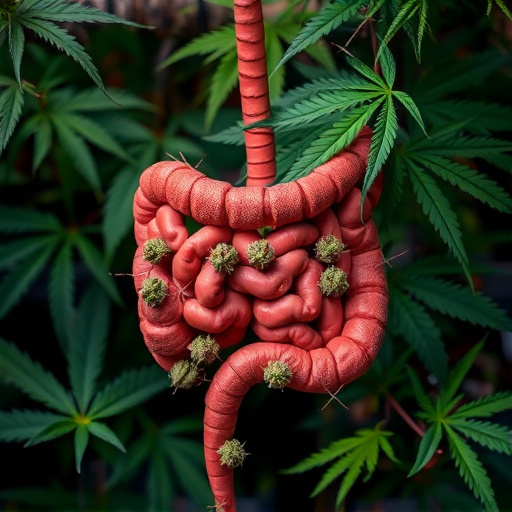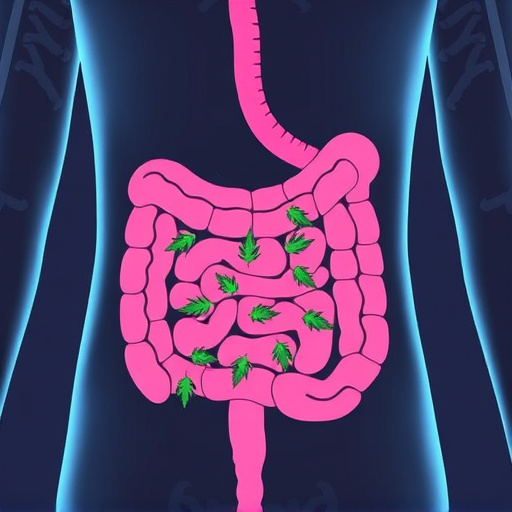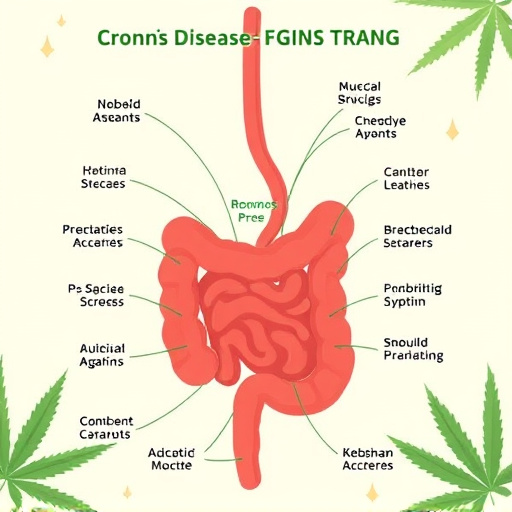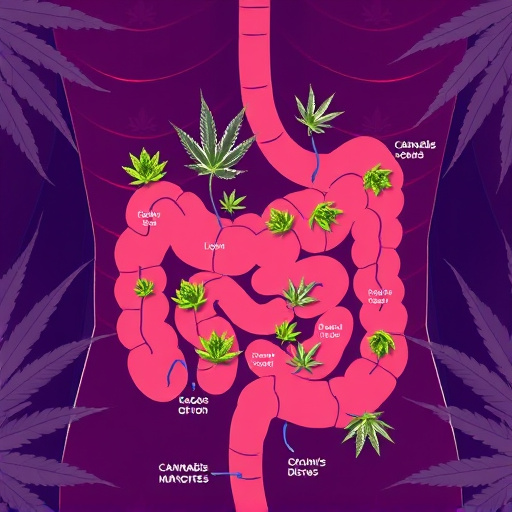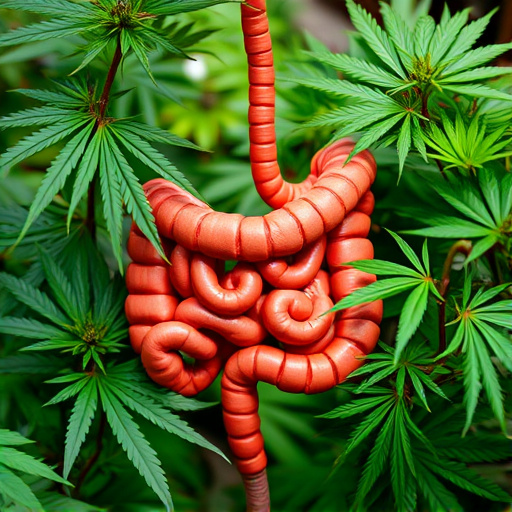Trichomes, microscopic hairs on cannabis flowers, produce cannabinoids and terpenes crucial for their unique properties. Different densities and compositions of these glandular hairs lead to diverse cannabis strains with varying potential therapeutic benefits, notably for Crohn's Disease. High-trichome strains offer anti-inflammatory relief through specific cannabinoid profiles like high CBD or balanced CBD:THC ratios, reducing intestinal inflammation associated with the condition. Analyzing trichome compositions enables personalized medicine approaches, potentially revolutionizing Crohn's Disease management with natural solutions.
“Unraveling the mysteries of trichomes, cannabis’ microscopic marvels, offers a deeper understanding of this plant’s unique properties. This article delves into the intricate world of these hair-like structures, revealing their vital role in cannabis flower development and diverse effects on health. From influencing cannabis strains’ unique characteristics to exploring potential therapeutic benefits for conditions like Crohn’s disease, trichomes are a game-changer. Discover how these microscopic elements shape our experiences and treatments in the ever-evolving landscape of cannabis research.”
- What Are Trichomes? An In-depth Look at Cannabis' Microscopic Structures
- The Role of Trichomes in Cannabis Strains and Their Effects on Health
- Exploring Trichome Profiles for Crohn's Disease Management: A Potential Approach
What Are Trichomes? An In-depth Look at Cannabis' Microscopic Structures
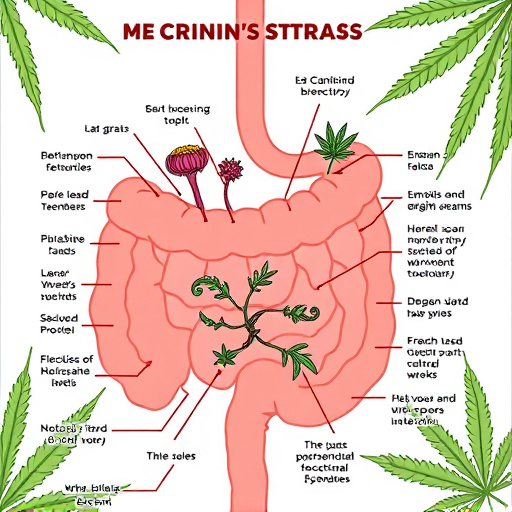
Trichomes, often referred to as “hairs” or “glandular hairs,” are microscopic structures that play a significant role in cannabis plants, especially in their flowers. These tiny, sticky outgrowths cover various parts of the plant, including the buds and leaves. Each trichome is composed of a cell cluster, with a head containing resins and terpenes, surrounded by a layer of glandular cells. They resemble tiny crystals or knobby protuberances when visible to the naked eye, giving cannabis flowers their distinctive appearance.
In cannabis, trichomes are responsible for producing and storing various chemical compounds that contribute to the plant’s unique properties. One of the most well-known compounds is THC (Tetrahydrocannabinol), which provides the plant’s psychoactive effects and has gained significant interest, particularly for its potential therapeutic benefits in managing conditions like Crohn’s disease. Different cannabis strains vary in their trichome density and composition, leading to diverse chemical profiles and experiences. Understanding trichomes offers deeper insight into the complex world of cannabis and its many applications.
The Role of Trichomes in Cannabis Strains and Their Effects on Health
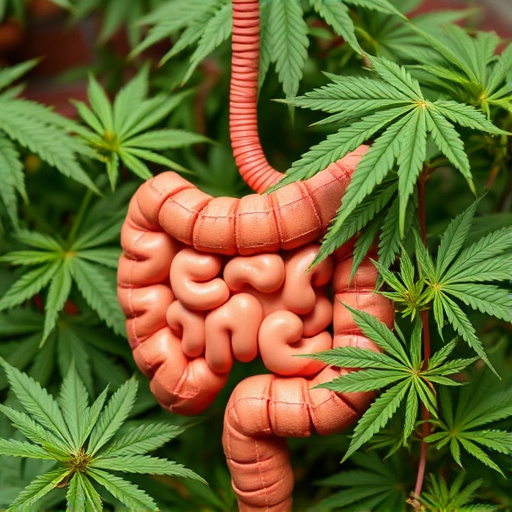
Trichomes play a pivotal role in differentiating various cannabis strains and their respective effects on human health. These tiny, glandular hairs, found on the surface of cannabis flowers, produce and secrete a wide array of compounds, including cannabinoids and terpenes. Each strain’s unique combination of these chemical profiles contributes to its distinct aroma, flavor, and potential therapeutic benefits or recreational experiences.
Beyond their contribution to the plant’s sensory profile, trichomes are increasingly recognized for their medical applications. Research suggests that cannabis strains rich in specific trichome compounds may offer relief to individuals with conditions like Crohn’s disease. Cannabinoids present in trichomes have anti-inflammatory properties, which can help reduce intestinal inflammation associated with Crohn’s. Additionally, terpenes found in high-trichome strains may aid in stress and anxiety reduction, potentially providing a more balanced and enjoyable experience for patients seeking symptom management.
Exploring Trichome Profiles for Crohn's Disease Management: A Potential Approach
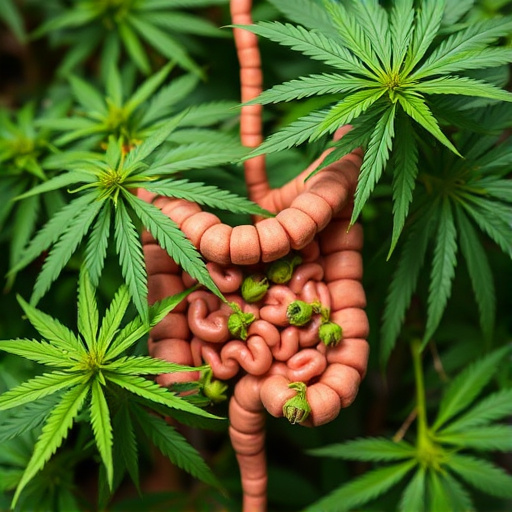
Exploring trichome profiles offers a promising approach for managing Crohn’s Disease, as specific cannabis strains with unique trichome compositions may provide therapeutic benefits. Trichomes, small hair-like structures on cannabis flowers, produce a range of compounds including cannabinoids and terpenes, which collectively contribute to the plant’s medicinal properties. Studies suggest that certain cannabinoid profiles, such as high CBD (cannabidiol) or specific CBD:THC (tetrahydrocannabinol) ratios, may aid in reducing inflammation and intestinal spasms associated with Crohn’s Disease.
By analyzing and comparing trichome profiles of various cannabis strains, researchers can identify patterns and correlations that could lead to personalized medicine approaches. This involves tailoring treatments to individual patients based on their specific trichome-derived compound needs. Such an approach could revolutionize the way we manage Crohn’s Disease, offering a natural, plant-based solution with potentially fewer side effects than traditional pharmaceuticals.
Trichomes, those microscopic structures adorning cannabis flowers, play a pivotal role in shaping the unique properties of different strains. Their intricate relationship with cannabinoids contributes to the diverse effects experienced by consumers. Furthermore, recent research suggests that understanding trichome profiles could offer a novel approach to managing conditions like Crohn’s disease, highlighting the potential therapeutic benefits of these remarkable plant components in cannabis strains.
